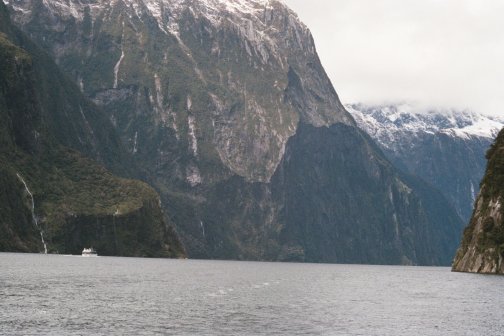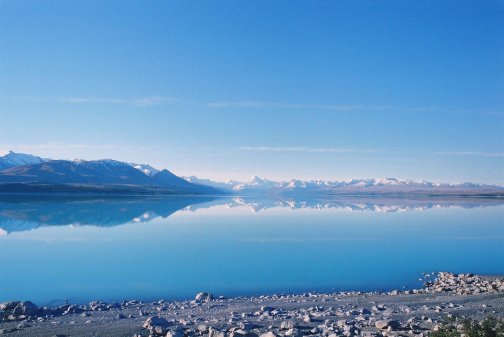Well I got my editor’s comments back on King of the Crags last week. And I’m about to go on holiday, so what’s the point in getting started only to stop again… (but then again, how can I leave it be for two weeks… ah, the tension, the trauma…). I’ve been looking forward to ranting on about the iniquities of the editing process, how all my cool and exciting ideas are being crushed or something like that, but the plain fact is that’s not how it works. What you actually get are some nice congratulatory words on a job well done and a few hints on how to make it even better. Like make sure you don’t lose track of who is related to who (meh… can’t really argue with that), and put a bit more effort into describing the eyries and the mountain scenery (which is fine with me – in a perfect world, I’d live in the mountains. I’d walk in the mountains. I’d write in the mountains. I’d buy one of those indestructible kitten-proof laptops I mentioned last time so that I could write in the mountains in the rain and the snow. I breathe mountains, dammit. In fact, in a perfect world, I’d probably be a mountain). The only thing I can find to really even start to try and raise a head of steam about is the complaint that the book has too many prologues. Is two prologues too many? Really?
Sadly yes. One of the nice things about being able to leave the story alone for six months, you get to see stuff like that a lot more clearly. Unless you go the whole hog, maybe. Yeah, a fantasy consisting of forty-seven prologues and three short chapters entitled ‘beginning’, ‘middle’ and ‘end’. Yeah, actually, maybe…
OK, OK, not King of the Crags, though. I’ll put the spare one up here when I’m done with the edit so you can see what you’re missing. It’s a good chapter. Pity it has to go.
<sigh>
So no, being edited isn’t really that traumatic. What’s traumatic is the terrifying realisation that this is it. This is the last chance, realistically, to make it right. To make it perfect. For some reason, that never really struck me with The Adamantine Palace, but the terror’s got me good this time. In a way The Adamantine Palace was easy. Kick in the door, make a big fuss. Yes, a lot got sacrificed for sheer pace. Right or wrong, that was the intent. It’s pretty clear from the reviews and the other feedback that I’ve had that for a lot of people, this really really works. For others, it really really doesn’t. For those the former, I offer more. For the latter… sorry, but it ain’t going to happen. Maybe next time.
And then there’s the middle ground. The ‘yes, but…’ camp. There’s quite a lot of you, too. Well, Yesbuts, in a way this one was always for you (because let’s face it, we all know I’m going to let rip again in book three). So what am I trying to do? As I sit down and start what will be the final set of re-writes to King of the Crags, what am I trying to achieve?
A long time ago, I read The Secret Agent by Joseph Conrad. For most of the book I was a bit bored. The characters struck me as two-dimensional and cartoonish. And then something happened. Just as the horror of the denouement was about to descend, the characters suddenly somehow flipped into three dimensions. The cardboard cut-outs I’d sneered and laughed at suddenly became people with souls. As I watched their world fall apart, I felt guilty and ashamed. That’s just how one book happened to work for me, but it’s haunted me ever since.
So that’s what I’m trying to achieve. I’m trying to recapture that feeling of guilt when a person you took for granted as being horrible crept under your skin while you weren’t looking and turned out to be human after all.
King of the Crags may be slower (not a lot slower, but it will be slower) than The Adamantine Palace. If I’m doing my job right, it will give the world and the characters some more depth. It’ll move events forward, but it’ll also put add a layer underneath everything that happened before. Book three will do the same – another step forward and yet another layer underneath. There will be action, adventure, terror and war. There will be dragons, and I promise they’re not going to go all soft and philosophical on you. You can even, just for those of you who need one, have a character with a strong moral compass. Maybe even two. Not sure why you want them – they’ll probably just get their asses eaten by some dragon and then you’ll get all pissy with me again. But you can have them anyway.
But for those who get to the end and if I’ve done my job really right, the shallow selfish bastard that is Jehal will haunt you long after you put book three down. 
So that’s the challenge I set myself, and I don’t know whether or not I can do it and it’s probably true to say that I’m as scared witless about launching into this edit as I’ve been about anything.
And at the same time, I can’t wait. Just in case I can get it right.
Squeeeeeeeeeeeeeeeeeeeeeeeeeeeeeeee!!!!!!!!!
Oh yeah, and a full draft of book three is written. Needs months of polishing, but it’s all there. Mwah ha ha…

